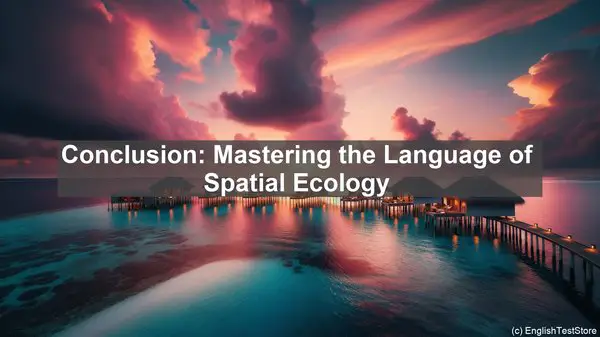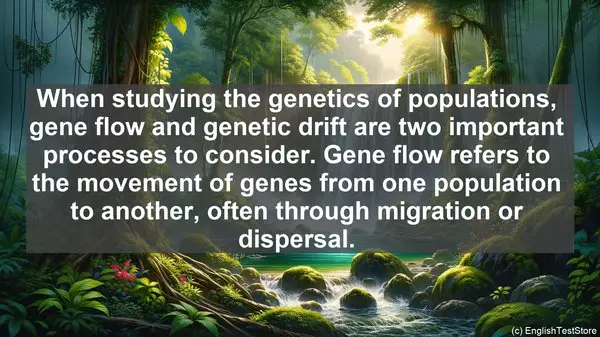Introduction: The Language of Spatial Ecology
Welcome to our lesson on the top 10 commonly confused words in spatial ecology. As budding ecologists, it’s essential to not only grasp the concepts but also master the terminology. In this lesson, we’ll dive into some of the most frequently misunderstood words in this field. So, let’s get started!
1. Dispersal vs. Migration
While both dispersal and migration involve the movement of organisms, they differ in their patterns and purposes. Dispersal refers to the movement of individuals away from their birthplace, often for the purpose of finding new resources or habitats. Migration, on the other hand, is a regular, seasonal movement of a population, typically over long distances. Understanding the distinction between these two terms is crucial for studying population dynamics and species distribution.
2. Connectivity vs. Corridor
In the context of landscape ecology, connectivity and corridors are often used interchangeably, but they have distinct meanings. Connectivity refers to the degree to which landscapes facilitate the movement of organisms or ecological processes. It’s a measure of how well connected different patches or habitats are. Corridors, on the other hand, are specific linear features that enhance connectivity by providing a pathway for movement. They can be natural, like rivers, or human-made, such as greenways. Both concepts are vital for maintaining biodiversity and facilitating gene flow.
3. Homogeneous vs. Heterogeneous
When describing a landscape or habitat, the terms homogeneous and heterogeneous are often used. Homogeneous refers to a uniform or similar composition, while heterogeneous implies a diverse or varied composition. Understanding the spatial patterns of homogeneity and heterogeneity is crucial for studying ecological processes, such as species interactions and resource availability. A landscape with high heterogeneity, for example, may support a greater diversity of species compared to a more homogeneous one.
4. Scale vs. Resolution
In spatial ecology, scale and resolution are fundamental concepts. Scale refers to the extent or size of a study area, while resolution refers to the level of detail or granularity of data. Choosing the appropriate scale and resolution is crucial for capturing ecological patterns and processes accurately. For example, when studying the distribution of small-scale features like individual trees, a high-resolution dataset is necessary. On the other hand, when examining large-scale phenomena like climate patterns, a broader scale may be more appropriate.
5. Patch vs. Matrix
In landscape ecology, a landscape is often composed of patches and a matrix. Patches are discrete areas or habitats that differ from the surrounding matrix, which is the dominant or more extensive habitat type. Understanding the characteristics and dynamics of patches and their interactions with the matrix is essential for studying landscape connectivity, species movement, and ecological processes. Patches can vary in size, shape, and composition, and their arrangement in the landscape can have significant ecological implications.
6. Endemic vs. Native
When discussing species distribution, the terms endemic and native are commonly used. Endemic species are those that are found exclusively in a particular geographic region and nowhere else. They have a limited distribution and are often vulnerable to habitat loss or other threats. Native species, on the other hand, are those that naturally occur in a given area, having evolved and adapted to the local conditions over time. Understanding the differences between these terms is crucial for conservation efforts and assessing biodiversity.
7. Fragmentation vs. Degradation
Both fragmentation and degradation are processes that can negatively impact habitats, but they occur in different ways. Fragmentation refers to the breaking up of continuous habitats into smaller, isolated patches. This can lead to habitat loss, reduced connectivity, and increased edge effects. Degradation, on the other hand, refers to the deterioration or decline in the quality of a habitat, often due to human activities like pollution or overexploitation. Both processes can have severe consequences for biodiversity and ecosystem functioning.

8. Gene Flow vs. Genetic Drift
When studying the genetics of populations, gene flow and genetic drift are two important processes to consider. Gene flow refers to the movement of genes from one population to another, often through migration or dispersal. It can help maintain genetic diversity and counteract the effects of genetic drift. Genetic drift, on the other hand, is the random change in gene frequencies within a population over time. It’s more pronounced in small populations and can lead to the loss of genetic variation. Understanding these processes is crucial for conservation genetics and population management.
9. Accuracy vs. Precision
In spatial data analysis, accuracy and precision are key considerations. Accuracy refers to how close a measured or estimated value is to the true or known value. Precision, on the other hand, refers to the level of consistency or reproducibility of repeated measurements. A dataset can be precise but not accurate if it consistently gives the wrong value. Conversely, a dataset can be accurate but not precise if it varies widely in repeated measurements. Both accuracy and precision are important for reliable spatial analysis and decision-making.

10. Resilience vs. Resistance
When studying the response of ecosystems to disturbances, resilience and resistance are two important concepts. Resistance refers to the ability of an ecosystem to withstand or resist a disturbance without significant changes in structure or function. Resilience, on the other hand, refers to the ability of an ecosystem to recover or bounce back after a disturbance. Understanding these concepts is crucial for assessing the vulnerability of ecosystems and designing effective conservation and management strategies.
